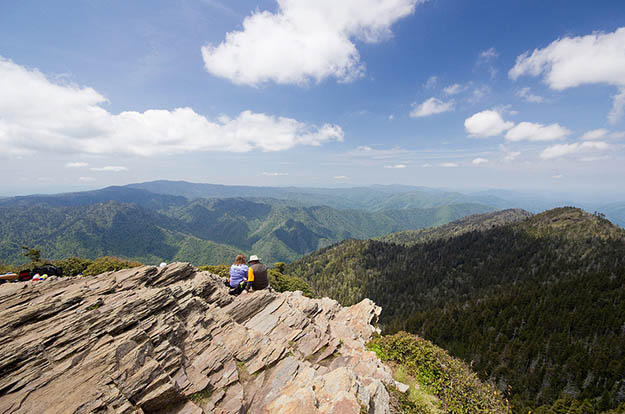Fishing, Hunting, & Trapping
How To Track Animals
Do you know how to track animals the right way? It’s a skill you need to practice. Heed our tips below so you can start working on your tracking skills.
Tips to Track Animals
Tracking animals is a skill that can take years to develop. Reading tracking guides is a great start, but getting out into the woods to find and identify tracks is the best way to advance your skills.
While the tracks themselves will indicate what animals were in the vicinity, much of what you will look for is called sign tracking. Signs are all of the other indications that an animal moved through the area, like fecal droppings, damaged vegetation, and fur/hair.
The best times to track are in the early morning and evening, and when you can get the track between you and your light source (the sun). This will give you the best vantage point to view the claw marks, toes, heel pads, and shape and size of the track.
Where to Start
You can start by selecting a landscape where animals are likely to have passed through. Herbivores need cover to hide in, and a wide variety of vegetation to feed on.
Transition areas are ideal for herbivores. Transition areas are where two types of habitats meet, like a field and a stream, or forest and a field. Wide-open areas are not a good place to find herbivores as they have no protection from predators.
Wherever there are herbivores, carnivores will follow. If you can find evidence of a variety of animals, like raccoons, birds, voles, rabbits, and deer, you have found an excellent habitat.
Mud is the ideal mold to create a clear and readable animal track, but you may have to rely on sign tracking or do your best to read tracks in the sand.
Sign Tracking
![]()
Using signs is especially valuable if the land is very dry, and tracks are not imprinted clearly in mud. Top signs refer to signs above ankle height. Bottom signs refer to signs you see below ankle height.
- Scat/fecal droppings – If you get close to droppings and they are warm and have a strong odor, they are new. Old droppings can indicate a game trail that is well-traveled.
- Disturbed vegetation – Grass will typically return to facing upward, so flattened grass can indicate that an animal is nearby. Broken twigs or branches are another sign that an animal passed through. Broken branches above the waist are created by large animals or humans.
- Fur/hair – Depending on the condition of the fur/hair, an animal may have come through in a hurry or intentionally rubbed against something.
- Gnaws/chews/scratchings – You can use teeth marks and types of gnawing, chewing, or scratching to determine what type of animal came through.
- Animal carcasses – If you come across a carcass that is still warm, a predator animal could still be nearby.
An exercise you can perform yourself is to create a tracking grid. Using rope or twine, create a grid of 8 squares, and walk through a different one each day to create damaged vegetation.
As days and weeks pass, you can see how the signs and tracks have faded or changed. This can help you to determine how old tracks are when you find them.
Features of Tracks
Fresh prints will have well-defined edges and be noticeable. Older prints will have cracked edges and may have debris or dust in/on them.
The features of tracks that you can use to assess what type of animal that made them are:
- Length of the track
- Width of the track
- Stride
- Claw marks (if they show)
- Toe prints (how many, and how they are arranged)
- Heel pads
Tools for Tracking
Technically, all you need for tracking is a field guide, attention to detail, and patience, and a few other tools can prove useful, especially when you are a beginner. However, you may want to put together a kit for tracking. It can include:
- Magnifying glass
- Tape measurer
- 6″ plastic ruler
- Small notebook
- Pen
- Ziplock bags – for scat, bones etc.
- Field Guides
- File Cards
- Tweezers
- Popsicle sticks and string
- Labels
- Rubber gloves
Remember that animals and their feces can harbor pests and diseases that can be extremely dangerous to humans. If you are handling fur or droppings, be sure to wear gloves.
Don’t give up on developing your tracking skills. There will be times that you are frustrated or want to give up, but each experience with tracking will help to hone your skills.
Have you ever track animals before? Share your experiences in the comments section!
Up Next:
-

 Do It Yourself7 months ago
Do It Yourself7 months agoParacord Projects | 36 Cool Paracord Ideas For Your Paracord Survival Projects
-

 Do It Yourself9 months ago
Do It Yourself9 months agoHow To Make Paracord Survival Bracelets | DIY Survival Prepping
-

 Do It Yourself9 months ago
Do It Yourself9 months ago21 Home Remedies For Toothache Pain Relief
-

 Do It Yourself10 months ago
Do It Yourself10 months agoSurvival DIY: How To Melt Aluminum Cans For Casting
-

 Exports8 months ago
Exports8 months agoAre Switchblades Legal? Knife Laws By State







